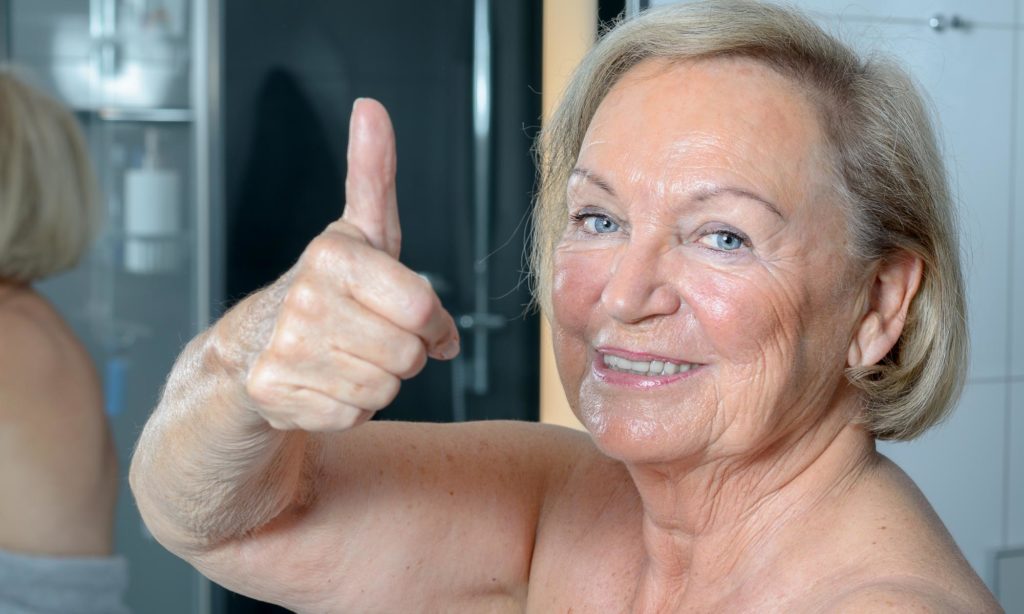
5 Ways to Senior-Proofing Your Home
For many seniors like you, living independently in your home for as long as possible remains at the top of the list of absolute must-haves in life. Fall-proofing your home contributes greatly to it and studies show that aging at home keeps you healthier and stronger and that it improves your cognitive awareness during the aging process. The benefits of aging at home far outweigh the concerns that may come up about the process. Living safely in your home as you get older is another issue to consider, however.
The Main Concerns, According to Our View:
There are two main concerns that seniors face as you age:
- Decreasing mobility and
- Decreasing memory
Falls are among the leading causes of serious injuries in older adults, and can result in hip fractures, traumatic brain injuries, or back injuries, and can have serious effects on overall quality of life. Decreasing memory concerns, such as early-stage dementia, can also be reason for genuine concern. If your home is not equipped to effectively address these concerns, you could end up being at greater risk of injury or harm. Adapting for these common problems could add years to your time at home.
To help improve the quality and length of independent living at home, here are some tips for senior-proofing your home to account those common mobility and memory-loss concerns.
Minimize the Risk of Falls Issues with these 5 tips
- Create clear walking paths around the home. Get rid of unused furniture, baskets on the floor, or other items that might be tripping hazards and keep rugs secured. Using non-slip mats underneath rugs will also help keep them from sliding or bunching up unintentionally.
- Install extra lighting. Visibility is reduced with minimal lighting. This can be a concern for seniors when they move around at night or during those early morning hours.
- Have table lamps appropriately placed that can be turned on easily. Add nightlights or accent lights along hallway baseboards to improve visibility in the dark. Include under-cabinet lights for the kitchen that can be kept on 24/7 to help when there’s an urge for a late-night glass of water.
- Adapt your bathroom. Include sturdy handrails in the bathroom to provide ease of movement. Common bathroom locations for handrails are next to the toilet and inside the bath or shower. These rails provide added support during transitional movements. Walk-in tubs are also great because they are easy to get in and out of with little effort, provide necessary seating for baths, and are equipped with hand-held shower heads to make bathing much more comfortable.
- Transition main living needs to one floor if possible. Going up and down stairs can become difficult. If the need arises, you can try rearranging the main floor of the house to accommodate all living essentials. Can you move the laundry room out the basement? Is there a bathroom or bedroom on the main level for easy access? If these accommodations cannot reasonably be made, it might be a good idea to consider relocating to a new home that can provide all essentials for independent living all on one floor.
Keeping you Safe should you Suffer from Memory Issues
- Stay away from patterns that are loud or busy. Busy patterns on curtains, furniture or artwork and realistic looking decor can often be a cause of agitation, confusion or fear.
- Keep cleaning supplies locked away. Come cleaning chemicals could easily be confused for a favorite beverage or food for some elderly individuals.
- Keep the refrigerator clean. Be sure that expired foods are thrown away and that left overs don’t sit too long on the shelf. Spoiled food that is accidentally eaten could cause food poisoning or other illnesses.
- Remove the locks on bedroom doors and bathrooms. This will help eliminate the chance of accidentally getting locked into a room with no way out.
These common concerns might not be an issue at the present time. But they do become problems at some point as you age. If this isn’t you just yet, it could be at sometime in the future. If you’re hoping to remain living independently in your home as long as possible, it’s important to consider making some of these accommodations now while you have the physical, mental, emotional and financial health to do so.
About Safe Step walk-in tubs
At Canadian Safe Step Tubs, it’s our goal to help seniors remain happy and healthy as they age in their own homes. Our walk-in tubs are one of the most practical additions to any senior’s home can lead to a safer, happier, independent life. Call us today to learn how.
